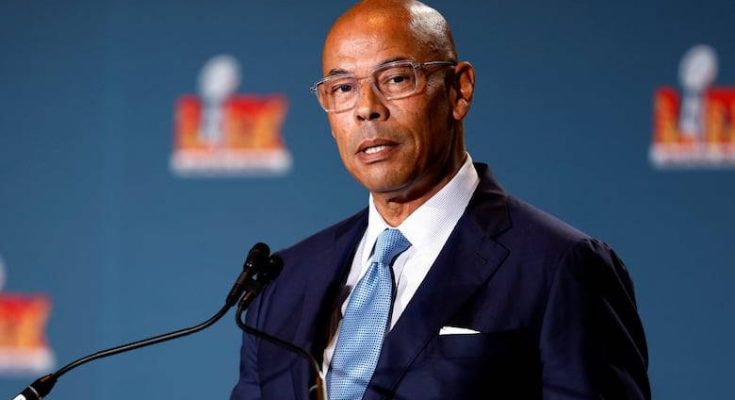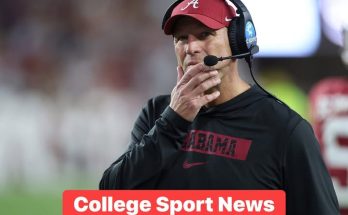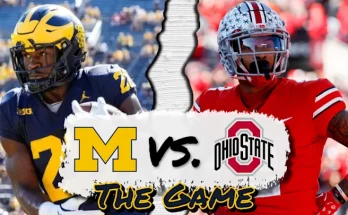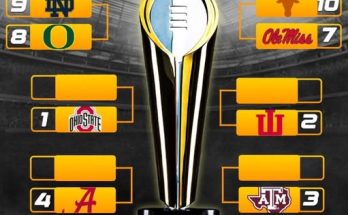In a stunning development that has sent shockwaves through the National Football League community and labor union circles, Lloyd Howell Jr., the Executive Director of the National Football League Players Association (NFLPA), has officially stepped down from his position amid a flurry of internal controversy, philosophical disagreements, and what sources describe as an “untenable working climate.” This bombshell announcement arrives just over a year after Howell took over the leadership reins from DeMaurice Smith in June 2023. What was supposed to be a promising new era of leadership for the players’ union has ended abruptly, leaving behind a swirl of questions, internal discontent, and speculation over what went wrong in such a short time.
Howell, who brought decades of experience from the private sector, including senior roles at Booz Allen Hamilton, was tapped to lead the union through a critical phase as it continued to navigate post-pandemic economic restructuring, emerging player safety concerns, and growing calls for a more player-centered league culture. When he was hired, the union hailed his credentials in finance, strategic operations, and his track record as a problem solver. Yet, those same private sector qualities may have clashed with the gritty, often politicized, and emotional reality of representing more than 1,800 active NFL players whose needs, concerns, and lived experiences differ vastly from boardroom decision-making.
Several insiders speaking on the condition of anonymity have cited major fractures between Howell’s vision for the NFLPA and the views of some of its most influential player leadership. At the heart of the rift were differing stances on a few critical issues: the handling of recent player health benefit reductions, the strategic response to artificial turf controversies, the direction of collective bargaining preparations for 2030, and Howell’s management style, which some felt was too corporate and insufficiently empathetic to player concerns.
One of the flashpoints reportedly occurred during heated internal debates over the union’s response to a growing chorus of player injuries believed to be exacerbated by synthetic playing surfaces. Star players including Aaron Rodgers and Travis Kelce had publicly criticized the league’s reluctance to move toward universal natural grass fields, citing safety statistics and personal experience. While the union initially appeared aligned with the players, multiple sources say Howell pushed for a more conciliatory strategy focused on long-term infrastructure collaboration with teams and owners rather than the more aggressive public pressure campaign favored by many player reps.
Players felt that the union’s leadership wasn’t moving fast enough or communicating transparently. Tensions came to a head during a private NFLPA leadership summit held earlier this summer. According to reports, Howell’s presentation on workplace injury management and a phased “field optimization” plan was met with vocal opposition from a contingent of veteran player representatives, who felt betrayed by what they saw as a failure to prioritize immediate player safety demands.
Another factor that likely contributed to Howell’s resignation was the fallout over a controversial health benefits package modification that reduced coverage for certain categories of retired players. This move, which the union said was necessary to ensure sustainability of its long-term healthcare pool, was met with fierce backlash. Dozens of retired players, some of whom are dealing with life-altering health consequences from their careers, staged protests and threatened legal action. Although Howell was not solely responsible for the change—many of the decisions were made by actuarial consultants—his role as the face of the union left him vulnerable to criticism. Some within the player community questioned his grasp of the long-term toll football takes on the body, and the optics of a finance-first decision did not help his standing.
Behind closed doors, Howell is said to have grown increasingly frustrated with the structural limitations of his role. Unlike a CEO with full executive authority, the Executive Director of the NFLPA must answer to a board of player representatives, making it difficult to enact sweeping changes without broad consensus. Sources close to Howell say he often felt undermined by factional divides within the union’s leadership and struggled to implement the kind of systemic reforms he had envisioned upon accepting the job.
Yet, to many outside observers, Howell’s downfall is not just about internal misalignment—it reflects broader tensions within the NFL and American labor movements. The NFL is one of the most lucrative entertainment industries in the world, yet its labor force—comprised almost entirely of Black men—is navigating a system where their peak earning years are brutally short, long-term health outcomes are poor, and post-retirement support is inconsistent at best. Leading a union in such a high-stakes environment demands not just administrative skill but also emotional intelligence, political acumen, and cultural fluency. Howell’s corporate background may have lacked the authenticity that today’s players demand from their representatives.
In the immediate aftermath of his resignation, NFLPA President JC Tretter issued a carefully worded statement thanking Howell for his service and citing “philosophical differences” as the primary reason for the change. Tretter noted that the union is forming an interim executive committee to oversee operations while a search for a new Executive Director begins. While no names have been formally proposed, early speculation suggests that the next leader may come from within the football world—possibly a former player or someone with a deep background in player advocacy and union negotiations.
Howell himself released a brief public statement that struck a conciliatory tone. “I am grateful for the opportunity to have served this incredible group of athletes,” he wrote. “The NFLPA plays a critical role in shaping not just the careers but the lives of thousands of professionals. I remain hopeful that the work we began will continue to bear fruit in the future.” Sources say Howell has no immediate plans to return to the corporate sector and may pursue academic or nonprofit work in the area of workforce policy.
The timing of Howell’s exit is especially precarious. The NFL is ramping up for a pivotal 2025 season that includes ongoing revenue growth from streaming partnerships, a widening wage gap between star players and rank-and-file contributors, and escalating concerns over long-term brain health issues. The NFLPA was already beginning early strategic planning for the next collective bargaining agreement, even though the current one doesn’t expire until 2030. Howell was believed to be laying the groundwork for a more data-driven, sustainability-oriented approach to those negotiations. His absence leaves a leadership vacuum at a critical juncture.
Meanwhile, player leaders are calling for a renewed focus on grassroots advocacy and player empowerment. Some are even advocating for a return to more combative tactics that characterized past eras of union leadership, including the threat of player strikes, coordinated social media campaigns, and boycotts to push for stronger safety and economic guarantees. Others are urging caution, arguing that the union must balance assertiveness with collaboration to ensure long-term influence within league decision-making.
Regardless of which path the NFLPA chooses, one thing is certain: the departure of Lloyd Howell Jr. marks a pivotal moment in the union’s history. His resignation is not merely a personnel change—it is a referendum on the type of leadership NFL players want in the modern era. In the coming weeks, as the NFLPA moves to install interim leadership and define the next chapter of its advocacy, players will have to reckon with the complex legacy of Howell’s brief but consequential tenure.
As teams begin training camps and the preseason heats up, the headlines may soon shift back to touchdowns and trades, but this development will linger in locker rooms and league offices alike. For the NFLPA, the message is clear—leadership must evolve with the players it serves, or risk losing the very foundation of its legitimacy. Howell’s departure may not have been the ending he—or the union—imagined, but it opens the door for a crucial conversation about identity, representation, and the future of collective power in America’s most-watched sport.



